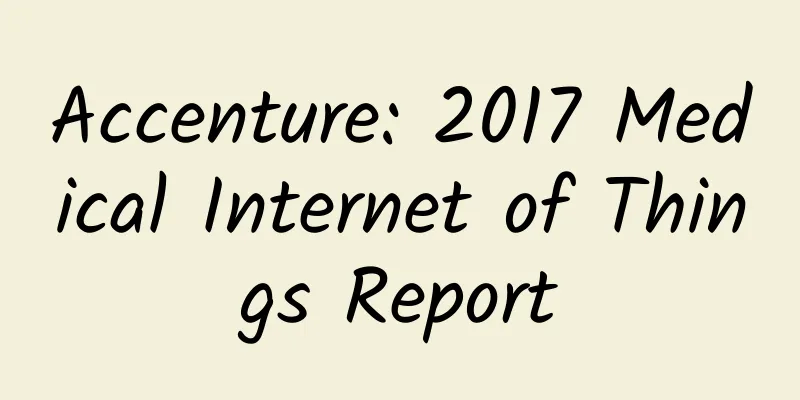First of its kind in my country! This technology successfully crosses the "Death Valley" →

|
When it comes to PHA, you may feel unfamiliar. But if I tell you that PHA has begun to be used in many fields such as tableware, food packaging, 3D printing, textile fibers, medical devices, etc., you will feel that it is not far from our lives. Chen Guoqiang, professor of the School of Life Sciences at Tsinghua University and director of the Center for Synthetic and Systems Biology, said that PHA, or polyhydroxyalkanoate, is a new material that grows from cells. It is completely degradable in nature and is non-toxic and harmless. As early as 30 years ago, Chen Guoqiang determined that PHA was the direction of future green materials, and he resolutely embarked on the research and development of biomanufacturing PHA. Copyright images in the gallery. Reprinting and using them may lead to copyright disputes. Solve the pain of "bacteria infection" In order to reduce the use of petroleum-based plastics and avoid causing more white pollution, researchers have been looking for biodegradable alternative materials. Biomanufacturing is one of the recognized production paths for alternative materials. Biomanufacturing, as the name suggests, is the process of redesigning and transforming organisms to obtain chassis cells with excellent performance, and then using these cells as factories to produce various materials needed by humans. Among many biomaterials, PHA has the advantages of biocompatibility, thermoplasticity, and degradability. Based on the exploration and practice of the previous few years, in 1994, Chen Guoqiang, who had completed his postdoctoral research abroad, came to Tsinghua University to form a team and concentrate on studying how to achieve mass production of PHA. In the laboratory, many problems are not easy to expose. In the factory, once the scale is expanded, all the problems will arise. Chen Guoqiang found that the first problem is "bacterial contamination" - in the process of cultivating microbial cells, other fungi and microorganisms will grow with them. Once the microbial cells are infected, the entire fermentation process has to start all over again, resulting in huge losses. In order to prevent the cells from being infected, strict aseptic operations must be performed, which places high demands on equipment and personnel and consumes a lot of energy. Chen Guoqiang recalled that he had tried many kinds of microorganisms but was unable to solve the problem until he thought of extreme microorganisms by chance. Extremophiles generally grow in extreme environments where ordinary microorganisms are difficult to survive and are not easily infected by other microorganisms. With it, the PHA production process can be relatively open, without the need for complex and cumbersome sterilization operations. Therefore, Chen Guoqiang turned his attention to halophilic microorganisms that are difficult to "infect". Unfortunately, the team members searched for it in many places but returned without success. It was not until 2006 that they finally isolated a strain that was both salt-tolerant and fast-growing from a soil sample retrieved from a salt lake at a low latitude with a large temperature difference between day and night and a salinity higher than seawater. This was the halophile. Building the foundation of the "chassis" Now that suitable strains are available, constructing chassis cells becomes the key to achieving biomanufacturing. During the fermentation process, chassis cells can convert renewable biomass such as glucose, starch, and vegetable oil into PHA. They are like machines in a factory that can continuously produce the polymer materials we need.” In order to obtain chassis cells, the genes of halophiles must be disassembled and reassembled. New problems arise - halophiles are too special and there is a lack of ready-made molecular manipulation tools. "'Molecular scalpel', 'molecular suture needle' and 'molecular transporter' are all essential tools." Chen Guoqiang explained that they are respectively responsible for cutting, recombining and transporting microbial genes. Without tools, halophilic bacteria are like a "black box" that can be seen but not used. Plasmid vectors are commonly used "molecular transporters" that are responsible for introducing recombinant genes into recipient cells. "This tool alone consumed a lot of our energy. Chen Guoqiang's team tried hundreds of existing plasmids, but none of them worked. What to do? The only way is to expand the scope and look for new plasmids. After unremitting efforts, we screened out more than 200 plasmids with potential, tested them one by one, and finally ushered in a turning point - 3 of them were usable! With the plasmid, the "black box" of microbial genetic modification has been opened. On this basis, the team has developed a series of tools for gene editing, metabolic regulation, and network optimization, which can modify and regulate the performance of chassis cells from different levels. It took the R&D team a full decade to develop molecular manipulation tools, and finally, the chassis cell was constructed by the team. The next step was production verification, which took us another seven or eight years. We overcame difficulties such as improving the fermentation process, transforming the bacterial morphology, and separating and extracting materials, and finally crossed the 'death valley' of industrial scale-up. Stepping on the road of "transformation" During the industrial scale-up campaign, in 2018, Chen Guoqiang proposed the "next generation industrial biotechnology" for the first time in the world, and it was verified in "small-scale trials", "pilot trials" and large-scale production. But this does not mean that this technology will be recognized by enterprises. The team faces a new hurdle: transformation of results. "'Next generation industrial biotechnology' utilizes a continuous fermentation system that does not require sterilization for production. It has the advantages of being open, efficient, low energy consumption, and saving water resources. It is the 2.0 upgraded version of traditional biomanufacturing technology." Wu Fuqing said that these disruptive features have caused traditional fermentation companies to have many concerns. "It has always been required to be strictly sealed and sterilized at high temperature. Now you say you don't need it, so don't do it?" Some companies even think that the R&D team is "fooling them." After several twists and turns, the team finally found a large fermentation company that was willing to give it a try. In order to dispel the other party's concerns, the fermentation test was carried out on site at the company. 200 cubic fermentation tank, first test, success! The other engineer wondered if there was a "luck" factor involved. So he tried again and succeeded again! The cooperation was then successfully concluded. In 2021, the achievement transformation enterprise, Beijing Microstructure Factory Biotechnology Co., Ltd. (hereinafter referred to as "Microstructure Factory") was established, and industrialization entered the fast lane. "After the company was established, driven by the market, the laboratory's scientific research progress has been accelerated across the board." Ouyang Pengfei, vice president of Microstructure Factory, said, "In the past, the strains had three generations in nine years; in recent years, three generations have been iterated in one year; this year, it is expected to have four to five generations." Iteration enables the strain to have better performance and provides a more solid foundation for industrialization. An intelligent production demonstration line with an annual output of 1,000 tons was built in Shunyi, Beijing, and a production base with an annual output of 30,000 tons was established in Yichang, Hubei... "We have also joined hands with Twinings Bio to promote the application of medical-grade PHA industry and build a 'lighthouse factory' in Hefei, Anhui to explore various application scenarios." Ouyang Pengfei introduced. In 2023, based on the development and utilization of halophilic bacteria and the contribution of "next-generation industrial biotechnology" to the industry, the International Metabolic Engineering Society awarded Chen Guoqiang the "International Metabolic Engineering Award". Today, related technologies have been widely used in open production of biomanufacturing. At the recently held National Science and Technology Conference, the National Science and Technology Awards Conference, and the Conference of Academicians of the Chinese Academy of Sciences and the Chinese Academy of Engineering, General Secretary Xi Jinping emphasized that we must aim at the commanding heights of future scientific and technological and industrial development, accelerate scientific and technological innovation in new-generation information technology, artificial intelligence, quantum technology, biotechnology, new energy, new materials and other fields, and cultivate and develop emerging industries and future industries. Looking to the future, Chen Guoqiang is full of confidence: "We will solidly promote the deep integration of scientific and technological innovation and industrial innovation, continue to improve the industrialization level of PHA, and contribute to the realization of China's 'dual carbon' goals and green development!" Source: Science and Technology Daily The cover image is a copyrighted image of the gallery, and its reproduction may lead to copyright disputes. |
<<: Mushrooms contain heavy metals and should not be eaten? The truth is not that scary
>>: Rocks are rocks, minerals are minerals? What are the differences?
Recommend
Cool! Stunning! Chinese style! Sneak peek——
On September 22, the posters for the Beijing 2022...
These 15 key statistics are what all game developers need to know
[[144734]] Sometimes, mobile game analytics can f...
User operation, here is a decision model you can try
1. Key elements of user operations The so-called ...
Europe's electricity supply is seriously insufficient, Switzerland simply banned 110,000 electric vehicles from the road
Switzerland is a picturesque country with highly ...
These 4 pages of PPT will help you understand what Internet "content marketing" is
In recent years, content marketing has become a h...
5 links to sort out the B-side product operation framework
Currently, many companies that develop B-side pro...
When it comes to camping outdoors, safety comes first!
As the weather clears up and the flower viewing s...
Take 3 minutes to determine whether your breasts are healthy?
appendix: Here’s another little piece of knowledg...
WeChat Speaking Skills Mini Program Function, How much does it cost to develop a Chat Talk Mini Program?
Some time ago, a customer consulted the editor and...
It’s endless. Seven more of its models were found to be involved in fraud. It’s time for Akio Toyoda to bow down again.
This is an era where boomerangs are flying everyw...
How to better utilize material and spiritual resources to motivate users?
As long as the product is valuable, people will u...
How to plan high-conversion activities in live broadcast rooms?
Today, let’s discuss how to conduct private domai...
ANZ: Organoid Industry Research Report
01. Popular science and market size Organoids ref...
Geely Borui GE New Energy officially launched, starting at 136,800 yuan
As we all know, our country is now vigorously dev...
50 Tips, Tricks, and Resources for Android Developers
The original intention of the author to write thi...









